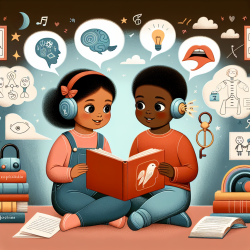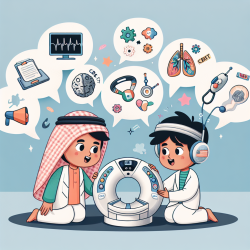Introduction
As a practitioner dedicated to improving children's health outcomes, it's crucial to stay informed about environmental factors that may impact our young patients. A recent study titled The Trade-Off between Optimizing Flight Patterns and Human Health: A Case Study of Aircraft Noise in Queens, NY, USA sheds light on the potential health risks associated with aircraft noise. This blog will explore the study's findings and discuss how practitioners can leverage this data to enhance their practice.
The Study: A Brief Overview
The study conducted a decision-analytic model using Markov health states to evaluate the health and economic impacts of the TNNIS Climb flight path at LaGuardia Airport. The TNNIS Climb, initially used only during the U.S. Open, became a year-round flight path due to flight automation systems. This change increased noise levels over densely populated areas, potentially affecting residents' health.
Key Findings
- The year-round use of the TNNIS Climb increased noise levels to above 60 decibels (dB) in certain areas, exceeding the European Environmental Noise Directive's recommended threshold of 55 dB.
- Increased noise exposure is linked to serious health conditions, including cardiovascular disease (CVD) and anxiety.
- The study estimated an incremental cost-effectiveness ratio (ICER) of $10,006 per quality-adjusted life year (QALY) gained when comparing limited versus year-round use of TNNIS.
Implications for Practitioners
Understanding the health implications of environmental noise is vital for practitioners, especially those working with children. Here are some steps you can take:
- Advocate for Noise Monitoring: Encourage schools and communities to monitor noise levels and advocate for noise-reduction policies.
- Educate Parents: Inform parents about the potential health risks of noise exposure and provide strategies to minimize impact, such as soundproofing rooms.
- Incorporate Noise Awareness in Therapy: Integrate noise awareness into therapy sessions, teaching children how to recognize and cope with noisy environments.
- Collaborate with Schools: Work with schools to implement noise-reducing measures, such as quiet zones and noise-canceling headphones.
Encouraging Further Research
The study highlights the need for further research into the health impacts of environmental noise. Practitioners can contribute by:
- Participating in Research Studies: Collaborate with researchers to gather data on the effects of noise on children's health and learning outcomes.
- Sharing Observations: Document and share observations of noise-related health issues in your practice to contribute to a broader understanding of the problem.
Conclusion
By understanding and addressing the impact of aircraft noise on health, practitioners can play a crucial role in safeguarding children's well-being. Utilizing data-driven insights and advocating for noise reduction can lead to better health outcomes for the communities we serve.
To read the original research paper, please follow this link: The Trade-Off between Optimizing Flight Patterns and Human Health: A Case Study of Aircraft Noise in Queens, NY, USA.










